|
This is the last part of the listings for those Spanish soldiers,
sailors, and other Patriots who served Spain while it was in the war against England from 1779 into 1783. For the names showing an asterisk,
the authors, Granville W. Hough and N. C. Hough, saw records which would
qualify a descendant to join the Sons of the American Revolution. Others may also have served during the war years, but descendants would have to
find the supporting records. Previous editions of Somos Primos have
listed the references used. Those interested in joining the Sons of the
American Revolution may get advice and assistance from Granville W.
Hough at gwhough@oakapple.net.
*Joseph de Saavedre (1734- Utrera), Capt. in 1782 and 1786, Havana
Regt. married. Tanner:202, 204, Captain in post-war East Florida. Legajo
7264:XVI:1, Lt Col, Havana Inf, 1799.
*Juan Saez (1744- Ciudad Burgos), at Mobile in March 1780 and
Pensacola,16 Oct 1780, 1st Sgt, Havana Regt, 1780, married. Legajo
7291:VIII:60, Sub.Lt of Grenadiers, Inf Regt of Louisiana, 1792.
*??? de Saint Domingue. MP:217, 231, Captain of the frigate Courageuse
in 1781, which was to take Saavedra to Veracruz.
Juan Safores. Sgt, Inf Militia of Havana, 1799. Legajo 7264:XII:45.
*José Salaberría. Beerman:181, 182, naval Comandante at Havana and chief
of squadron, 1782.
*Juan Salado. Ch1:21, Capt, gunboat, San Diego, Feb 1781.
*Bartolomé de Salas (1744-), entered service 1778, Surgeon, Havana
Regt, 1786 and 1788.
Manuel de Salas, entered service as a Lt. with this unit in 1786,
possibly with prior service in some other unit. Lt, 1789, Inf. of Cuba,
Legajo 7260:VIII:29.
Ignacio Salazar. Lt, 1799, Inf of Havana, Legajo 7264:XVI:38.
Nicolás Salazar. Surgeon, 1799, Bn Mil Inf, Cuba & Bayamo, Legajo
7264:XI:7.
*Sancho Salazar/Zalasar (1746-), entered service 1763, Capt, 1789, Inf
Vets of Havana, Legajo 7260:VIII:12.
*Pedro Salcedo/Salzedo (1743 - ), entered service 1759. Legajo
7261:XXVII:4, Capt, Arty Corps of Havana, 1787 and 1791.
*José Saldivar/Saldibar (1751 - ), entered service 1769, Capt, Blancos
of Havana, 1787.
*Alfonso Saldos (1752 Logrono, Castilla Vieja - ), 1st Sgt in Feb 1783
and 1786, Havana Regt, single. A4:XVI:83, 2d Lt, c 1789. Legajo
7259:XII:77, Sgt, Havana Inf, 1786.
*Leandro Salgado. A3:XII:22, soldier, c 1782.
*Joaquín de Salva. Capt de llaves, 1800, Staff at San Cristóbal, Havana,
Legajo 7264:II:3.
*José Samartin (1734-), entered service 1748. Adjutant, grad Capt,
1787 and 1795, Mil Inf, Havana, Legajo 7262:IX:67.
Antonio Sánchez. Sgt, Inf Militia of Havana, 1799. Legajo 7264:XIII:92.
*Bartholomé Sánchez (1758 Florida-), entered service 1777, SubLt in
1781 and 1788, Havana Regt, single. Legajo 7264:XVII:28, Adjutant, Cuban
Inf, 1799.
*Domingo Sánchez. Legajo 7264:XI:11, Capt, Bn Inf Mil of Cuba y
Bayamo,
1799.
*Domingo Eugenio Sánchez (1740 - ), entered service 1755, SubLt, 3rd
Comp, Cuba Blancos. Legajo 7263:XVIII:2, Lt, Cav, Cuba y Bayamo, 1797.
Francisco Javier Sánchez. Cadet, Comp. Cav, Urban, of Cuba y Bayamo,
1797. Legajo 7263:XVIII:5.
*Francisco Sánchez Griñan (1742-), entered service 1761,
Sub-Inspector, Pardos, Cuba y Bayamo, 1787. Adjutant, 1799, Bn Inf Mil,
Cuba & Bayamo, Legajo 7264:XI:2.
*Ildefonso Sánchez (1716 Florida - ), entered service 1735, Capt in 1777
and 1786, Dragoons of America, married. Legajo 7260:III:8, Capt,
Escuadrón de Dragoons de América, 1790.
*Josef Sánchez Griñan (1769 Cuba - ), Cadet in Jul 1783 and 1786, Havana
Regt, Legajo 7264:XVI:48, SubLt, Inf of Havana, 1799.
Juan Sánchez. Legajo 7260:X:69, Sgt, Cav Mil of Havana, 1789.
Juan Sánchez Griñan. Cadet, Inf of Havana, 1799. Legajo 7264:XVI:89.
Manuel Sánchez. Sgt, Inf Militia of Havana, 1799. Legajo 7264:XIII:114.
Miguel Sánchez. Distinguished Soldier, Cav Militia of Havana, 1793.
Legajo 7262:XX:87.
*Pedro Sánchez (1758 - ), entered service 1776, 1st Sgt, Inf
Blancos,
Havana, 1787.
*Pedro Sánchez Griñan (1771 Cuba - ), Cadet in Jul 1783, Sub.Lt, Inf of
Havana, 1799, Legajo 7264:XVI:49.
*Pedro Antonio Sánchez. K:122, Col, militia of Cuatro Villas, 1792.
Legajo 7261:IV:1, Col, Bn Mil de Cuarto Villas, 1792.
Pedro Gabriel Sánchez. Cadet, Bn Militia of Cuatro Villas, 1799. Legajo
7264:X:68.
*Ramón Sanchez (1766 Havana - ), Cadet, March 1783 and Cadet, 4th Comp,
Dragoons of America, 1786, single. Legajo 7265:II:183, Lt, Dragoons of
America, 1809.
Salvador Dionisio Sánchez. Cadet, Militia of Cuatro Villas, 1799. Legajo
7264:X:69.
*W. San Martin. M:350, Capt, brig galley El Correo de Cadiz in May 1782
invasion of Nassau.
Torcuato Sanson. Cadet, 1789, Inf of Cuba, Legajo 7260:VIII:78.
*Antonio Santa Cilia. Capt, 1797, Inf of Cuba, Legajo 7263:XV:8.
Pedro Santa Cilia. Lt, 1800, Inf of Cuba, Legajo 7264:XVII:33.
Ramón Santa Cilia. Lt, 1799, Inf of Cuba, Legajo 7264:XVII:42.
*Marqués de Santa Clara. Historia:229, Archer:45, Capt-General of Cuba,
1796.
*Agustín Santa Cruz. Legajo 7261:XI:28, Lt, Havana Inf, 1792.
Joaquin Santa Cruz. Col, Inf Militia of Havana, 1809. Legajo 7265:I:3.
*Juan de Santa Cruz (1744 - ), entered service 1763, Capt, Blancos of
Havana, 1787. K:185, Capt, age 37, 1781, in Cuban militia. Legajo
7262:IX;5, Capt/Lt Col, Inf Mil of Havana, 1795.
Juan Santalices. Chaplain, 1799, Plana Mayor del Bn Pardos, Havana,
Legajo 7264:V:11.
Domingo Santaya. Lt, 1800, Staff, San Cristóbal, Havana, Legajo
7264:III:8.
*José Santaya (1750 - ), entered service 1768, 1st Sgt, Inf Blancos of
Havana, 1787. Lt, 1800, Staff, San Cristóbal, Havana, Legajo 7264:III:12.
*Elías Santiago. A2:IX:7, soldier, c 1779.
*Juan Santin. C&C:101, soldier Regt of Havana, killed at the Village,
1781.
*??? Santo Domingo. Beerman:198, naval capt of the French frigate,
Courageuse, involved in money transport for Havana, October 1781. This
is the ship mentioned by Saavedra as carrying 1,000,000 pesos, at the
same time the vessel he was on was carrying 300,000 pesos to support the
invasion of Jamaica.
Gabriel Santoyo. SubLt, Militia Dragoons of Matanzas, 1799. Legajo
7264:VII:16.
Lorenzo Sanz. Sgt, Inf Militia of Havana, 1793. Legajo 7262:XXI:88.
N. Sapian. MP:151, Captain of the Carmen. Mir:174, at Pensacola, 1781.
Francisco Saquet. A2:VI:7, soldier, c 1776.
Juan Sarabia. Lt, 1800, Corps Prov Cav Lanceros de Veracruz, Legajo
7276:XIV:14.
Mariano Sarachaga Adjutant, 1800, Vol Inf de Santa Marta, Legajo
7282:XVI:6.
*Lordo Saratain. M:350, Capt brig galley La Susana in May 1782 invasion
of Nassau.
Manuel Sarate. A3:XI:1, mentioned, c 1781.
José Sardina. Distinguished Soldier, Cav Militia of Havana, 1793. Legajo
7262:XX:110.
*J. B. Sarrgoitia. M:350, Capt brig galley La Begnona in May 1782
invasion of Nassau.
*Josef Sastre (1751 Ceuta - ), entered service 1762, Lt, Capt grad in
1781. M:114:App G, Lt, Navarra Regt, recommended for promotion after
Mobile, 1780. Lt, Capt grad in 1786 and 1788, Havana Regt, married.
Legajo 7264:XVI:2, Lt Col & Commandant, Inf of Havana, 1799.
José Cayetano de Sastre. Cadet, Inf of Havan, 1799. Legajo 7264:XVI:99.
José Sauri. SubLt, Militia of Cuatro Villas, 1799. Legajo 7264:X:27.
*Phelipe Saussier. Mob:611, Capt, balandra Besaña, at Mobile, 1781.
*Pedro Savatie. Appeals Case 95, boatswain, Nov 1782 on the Spanish San
Antonio.
*Felipe de Sayas/Zayas (1741 - ), Capt, Inf Vets of Havana, 1788. Col
Commandant, 1800, Castillo del Morro, Staff, San Cristóbal, Havana,
Legajo 7264:II:6.
José Rafael de Sayas. SubLt, Bn Inf, Militia of Puerto Príncipe, 1799.
Legajo 7264:XIV:26.
Manuel de Sayas. Cadet, Bn Inf, Militia of Puerto Príncipe, 1799. Legaj9
7264:XIV:43.
*Melchor de Seguera. Lt in 1780, served at New Providence and Havana,
1782, Capt, San Carlos de Perote, Regt Corona of New Spain, 1800,
single, Legajo 7277:???
José Sehiso. Sgt, Inf Militia of Havana, 1799. Legajo 7264:XIII:113.
*Antonio Seidel (1742 - ), entered service 1756, Sub-Inspector, grad
Capt, Morenos, 1787. K:123, SubInspector, 1789, Cuban militia. Legajo
7264:VIII:1, Col, Bn de Morenos of Havana, 1799.
*Gregorio de Selva (1744 - ), . Sgt, 1788, 2d Comp, Squadron, Dragoons
of America, Legajo 7259:III:23.
Rafael Sequeira. Cadet, Inf of Cuba, 1792. Legajo 7261:XII:54.
José Esteban Serantes. Cadet, Inf of Cuba, 1791. Legajo 7261:XXVI:68.
José Ramón Serantes. SubLt, Inf of Cuba, 1797. Legajo 7263:XV:52.
*Pablo Serra of Havana. Chávez:225, in 1781 lender of money to the
French navy.
Antonio Serrano. Sgt, Comp of Inf from Cataluña in Havana, 1792. Legajo
7261:IX:19.
José Serrano. SubLt, Inf of Cuba, 1799. Legajo 7264:XVII:72.
José Toribio Serrano. Distinguished Soldier, Cav Militia of Havana, 1792. Legajo 7262:VII:110.
*Juan Serrano (1740 Moratalla - ), 1st Sgt in 1769, SubLt, Havana Regt,1786, single. Lt, 1799, Inf of Havana, Legajo 7264:XVI:30.
*José Serrato. MP:153, Capt of frigate, commanding chambequín/tender
Caymán, Pensacola, 1781.
*Iñigo Sevilla. Beerman:204, operated prisoner transport and clandestine
operation from Havana, 1781-82.
*B. Seyrera. M:349, Capt, letter La Mesericordia in May 1782 invasion of
Nassau.
*Vicente de Siera (1751 - ), entered service, 1761, SubLt, Inf Vets of
Havana, 1788. Lt, 1797, Inf of Cuba, Legajo 7263:XV:29.
*Francisco Antonio de Sierra. A2:IX:48, soldier, c 1779.
*Francisco de Silva. Lt, 1793, Comp Cav, Urbana, Cuba & Bayamo, Legajo
7262:XXV:2.
*Joseph Silva. A3:XI:12, 1781, and A4:XVI:19, soldier, c 1789.
*Gabriel Sistaré. Lewis:86-87, interpreter at Nassau, 1783.
Miguel Socarras. Cadet, Bn Inf Militia of Puerto Príncipe, 1799. Legajo
7264:XIV:50.
Ubaldo Socarras. Cadet, Bn Inf Militia of Puerto Príncipe, 1799. Legajo
7264:XIV46.
*Marques del Real Socorro (1751 Havana - ), entered service 1767, Col
Blancos of Havana, 1787.
*Francisco de Sola (1741 - ), entered service 1760, Lt Inf Vets of
Havana, 1788. Woods:79, Sgt of pickets, Prince's Regt, marr. wit., 1779,
New Orleans. Legajo 7264:II:11, Capt, Commandant of the Castillo de la
Punta, Staff of San Cristóbal, Havana, 1799.
Francisco Sola. Cadet, Comp Inf of Cataluña in Havana, 1799. Legajo
7264:VI:21.
*Josef Solano y Bote, Marqués del Socorro, also called José de San
Martín (1726 Zorita, Cáceres – 1806 Madrid). Caughey:208,
Harrmann:127,
Spanish Chief of Squadron at Pensacola. Starr:205, he arrived with 1600
Spanish soldiers. Tides:169, made 1780 report on Gulf of Mexico.
Floyd:157, Chief of Squadron at Havana who provided 13 ships for the
Black River Campaign in 1782. C&R:125, wife was Rafaela Ignacia Ortiz
de
Rojas of Buenos Aires, and their family was in Santo Domingo for part of
the war years.. Beerman:75, 79, 167, 296, received title of Vizconde de
Feliz Ardid in 1780.
*José Soler. Mob:18, Capt, galley La Pura y Limpia Concepción, at
Mobile, 1780. M:349, Capt same vessel in May 1782 invasion of Nassau.
Fulgencio Solis. Cadet, 1790, Inf of Cuba, Legajo 7260:IV:75.
Felix Solorzano, Cadet, 1789, Inf of Cuba, Legajo 7260:VIII:90.
Bernardo Sori. Cadet, Militia of Cuatro Villas, 1799. Legajo 7264:X:55.
*Pablo Sori. Capt, 1793, Mil de las Cuatro Villas, Legajo 7262:XVII:7.
José Sosa. Sgt, Squadron of Dragoons of America, 1799. Legajo 7264:XV:31.
Juan de Sosa. Sgt, Inf of Havana, 1799. Legajo 7264:XVI:87.
*Manuel de la Sotarriba. Cadet, Feb 1780, SubLt, May 1780, in Havana and
New Providence Expeditions, 1782, Capt, San Carlos de Perote, 1800, Inf
of the Crown, single, Legajo 7277:III:27.
*Antonio Soto (1762 Ciudad Cadiz - ), sailed from Cadiz in 1780 and
stopped at Isla de San Christóval. Cadet, 1786, Inf of Havana, Legajo
7259:XII:114.
*José de Soto. Sgt Major, 1799, Inf of Cuba, Legajo 7264:XVII:4.
*Francisco Sotolongo (1762 Havana - ), Cadet in 1781 and 1788, Havana
Regt, single. Legajo 7261:XI:40, SubLt, Havana Inf, 1792.
José María Sotolongo. Cadet, Cav Militia of Havana, 1799. Legajo
7264:XII:81.
*Juan Sotolongo (1735 - ), entered service 1751, Lt, Blancos of Havana,
1787. Legajo 7264:III:11, Staff, San Cristóbal de La Havana, 1800.
*Tomás Domingo de Sotolongo (1750 - ), entered service in 1780, Capt,
Havana Cav, 1787. K:185, Capt, Vol Cav Regt, age 31 in 1781. Legajo
7264:XII:7.
*Josef Suárez de Navarre. Ch1:19, unm CI recruit who joined Matanza
Dragoons in Havana, Aug 1779.
José Antonio Suárez. SubLt, Bn Inf Militia of Cuba 6 Bayamo, 1799.
Legajo 7264:XI:18.
*Joseph Antonio Suárez (1762 - ), entered service, 1778, Cadet, 1st Comp
in Cuba of the Blancos, Cuba y Bayamo, 1787.
Fermin Subiran. Sgt, Inf of Cuba, 1792. Legajo 7261:XII:43.
Diego Sucre. ???, Inf of Havana, 1799. Legajo 7264:XVI:12.
Juan Tabela. Adjutant, 1799, Plana Mayor del Bn Morenos of Havana,
Legajo 7264:VII:9.
*Gonzalo Tablada (1721 - ), entered service 1732, Sgt Major, Grad Lt
Col, 1787 and 1791, Bn Inf Mil of Cuba y Bayamo, Legajo 7261:XVII:2.
*Andrés Tacón. NavChronIV:355, Capt of the Santa Rosalía, 34 guns, on
the voyage to West Indies in Apr 1780 under Admiral Solano. MP:166,
Starr:208, Naval Captain, 1781, at Pensacola. Mob:446, in 1780 Pensacola
convoy. C&C:94, Capt, frigate, Santa Rosalía, at Pensacola.
Hilario Tamayo. Lt, 1797, Comp Cav Urbana of Cuba y Bayamo, Legajo
7263:XVIII:7.
José Fabino Tamayo. SubLt, Bn Inf, Militia of Cuba Y Bayamo, 1799,
Legajo 7264:XI:42.
Manuel Vicente Tamayo. Cadet, Bn Inf, Militia of Cuba y Bayamo, 1993.
Legajo 7262:XIX:46.
Marcos Tamayo. SubLt, Comp Cav, Urban, of Cuba y Bayamo, 1793. Legajo
7262:XXV:5.
*Fermin Tarro (1748 Barcelona - ), in the conquest of Providencia in
1782, Sgt, Havana Inf, 1788, single. Sgt, 1789, Comp Inf of Catalonia in
Havana, Legajo 7260:V:16.
*Carlos Telles (1758 Havana - ), entered service 1775, at Pensacola 16
Oct 1780, SubLt, Havana Regt, 1786, single. SubLt, 1792, Inf of Havana,
Legajo 7261:XI:32.
*Joseph Tenton. Cummins:64, Spanish observer in Santiago, Cuba, who
reported on British activities in Jamaica.
*Luís Lorenzo Terrazas. Beerman:82, 83, Lt of the navy in Mobile
operation, 1780.
*Carlos Testona/Festona of Havana. Chávez:225, in 1781 lender of money
to the French navy.
*Antonio Tirada. M:350, Capt, sloop galley San Diego in May 1782
invasion of Nassau.
*Juan Tirri/Terry y Lacy. Col, 1809, Dragoons of America, Legajo
7265:II:174.
*Antonio Toledo(1731 -), entered service 1748, Capt, 1786, Inf of
Havana, Legajo 7259:XII:19.
*Antonio de Toledo (1762 Florida - ), entered service 1777, at Pensacola
16 Oct 1780, SubLt of Bandera, Havana Regt, 1786, single. SubLt, 1788,
Inf of Havana, Legajo 7259:II:50.
Benito Toledo. Distinguished Soldier, Cav Militia of Havana, 1793.
Legajo 7262:XX:108.
*José de Toledo (1764 Havana - ), entered service as Cadet in 1782,
Cadet 1788, Havana Regt, single, Legajo 7259:II:85.
Miguel Tornes. Lt, 1797, Mil Inf of Havana, Legajo 7263:XI:20.
*Salvadór del Toro (1738 - ), entered service in 1753. Ch1:23, Lt, Arty,
of Havana Regt, aboard Caymen, Feb 1781, for Pensacola. Capt in 1788,
Corps of Arty, Havana, Legajo 7259:IV:3.
José Torralva. Sgt, Inf of Cuba, 1792. Legajo 7261:XII:48.
*Antonio María de la Torre (1726 Havana - ), entered service in 1740,
grad Lt Col in 1781, Sgt Major and Plana Mayor, Havana Regt, 1786,
widowed. K:126, Sgt Major of 1st Bn, Cuban Inf Regt, in 1788. Legajo
7263:XXII:2, Comandante/Col, Havana Inf, 1796.
Antonio María de la Torre. Cadet, Inf of Cuba, 1799. Legajo
7264:XVII:101.
*Bernabe de la Torre. Legajo 7264:XIV:4, Capt, Bn Inf Mil, Puerto
Príncipe, 1799.
*Joaquín de la Torre. Mob:813, signed the map of Mobile, 1781. Legajo
7264:XVII:65, SubLt, Cuban Inf, 1799.
Joaquin de la Torre y Cardenas. SubLt, Inf of Cuba, 1799. Legajo
7264:XVII:73.
José Francisco de la Torre. Sgt, Bn Militia of Cuatro Villas, 1799.Legajo 7264:X:30.
José Ignacio de la Torre. SubLt, Inf of Havana, 1799. Legajo 7264:XVI:60.
José María de la Torre. Cadet, Inf of Havana, 1797. Legajo 7263:XIV:93.
*José María de la Torre (1756 Havana - ), entered service in 1769, Lt in
1782 and 1786, Havana Regt, married. Legajo 7261:XI:47, SubLt, Havana
Inf, 1792. Legajo 7264:XVII:13, Capt, Cuban Inf, 1799.
*Marquís de la Torre, Felipe de Fonsdeviela y Ondeano (1725-1784).
ND5:1339-1340, Cummins:208, Captain General of Cuba, 1771-1777.Abbey:58, Spanish official, 1776. Historia:215, MP:99n69, former
Governor of Havana in 1777.
Rafael de la Torre. Cadet, Inf of Havana, 1799. Legajo 7264:XVI:114.
*Seb. Torrens. M:349, Capt, letter St. Vincente Ferrer in May 1782
invasion of Nassau.
*Antonio Torres. A2:IX:16, soldier, c 1779.
*Manuel de Torres (1758 - ), entered service in 1775, 1st Sgt, 1788, Inf
of Havana, Legajo 7259:II:75.
Manuel Torres. SubLt, Inf of Cuba, 1799. Legajo 7264:XVII:62.
Matías de Torres. Sgt, Inf of Havana, 1797. Legajo 7263:XIV:83.
*Miguel Torres (1751 - ), entered service 1769, 1st Sgt, Inf Blancos of
Havana, 1787.
*Miguel Torres. Soldier and Cpl in 1780-82 in Grenada, Veracruz, Havana,
and Guarico operations, 1st Sgt Grenadiers, Inf of Mexico, 1800, single,
Legajo 7277:IV:65.
*George Townson. Lewis:121, ship captain who took messages from Havana
to Nassau, c 1783.
*Angel de los Toyos (1743 - ), entered service in 1761, 1st Sgt, 1787
and 1789, Mil Cav of Havana, Legajo 7259:VI:56.
Francisco Toyos. Sgt, Cav Militia of Havana, 1799. Legajo 7264:XII:72.
*Jaime Tremoll. Mob:448, Capt, galley Jesús María y José, Pensacola
convoy, 1780. Mob:611, Capt, galley San Francisco de Paula, Mobile, 1781.
Luis Trevejos. Cadet, Inf of Havana, 1799. Legajo 7264:VVI:90.
*Antonio Tur (c 1745 Mallorca, Balearic Islands, Spain - ), entered
service 1764, 1st Sgt in 1781 and 1786, Havana Regt, married. H:224, Sgt
1st Cl, Dragoons of America, md.
Henríque Turen. BR:710, soldier of Light Inf of Cuba, bur 14 Aug 1792,
SJO.
Francisco Uberty. Sgt, Squadron of Dragoons in America, 1797. Legajo
7263:XIII:22.
*Antonio Ugarte. SubLt, Inf of Havana, 1789. Legajo 7260:X:20.
*Domingo de Ugarte. Capt, 1799, Inf of Havana, Legajo 7264:XVI:7.
*Martin de Ugarte. Sgt Major, 1792, Inf of Cuba, Legajo 7261:XII:2. Prob
same as Martin de Ugarte, Col, 1799, Cav Mil of Havana, Legajo 7264:XII:1.
*Tomás Ugarte (1757 Havana - ), entered service in 1775, wartime service
in Louisiana Regt, Capt of Grenadiers, grad Lt Col, Havana Regt, 1786.
Capt, grad Lt Col, 1799, Inf of Cuba, Legajo 7264:XVII:8.
*Luís de Unzaga/Unzaya y Amezaga (1717 Málaga – 1793 Granada & Málaga).
Beerman:296, Caughey:55-56, Governor of Louisiana from 1769 into 1776
who began helping Americans. Abbey:57, footnote 1, ordered to collect
info on English in 1775. Woods:97, wife was Elizabet de St Maxent of
Louisiana, bap ch in 1776 and later. Tanner:17, 21, Governor of Cuba,
1782. Cummins:208, Captain General of Cuba, 1782-85. Legajo 7259:XVI:54,
Lt Col, Inf of Havana, 1765.
*José Uriarte y Borja. Ch1:23, Lt of frigate, San Ramon, Feb 1781.
Vicente de Uriarte. Surgeon, 1799, Mil Inf of Havana, Legajo 7264:XIII:59.
*Diego de Urra. Lt, 1788, Corps of Art of Havana, Legajo 7259:IV:10.
*Juan de Urra. K;185, SubLt, 1st Bn, Vol Inf of Cuba, 1781.
*Juan Ignacio de Urriza. MP:100n74, Caughey:192, Spanish Intendant of
the Army in Havana reporting to José de Gálvez, Minister of the Indies,
1781. Cummins:65, Intendant of Cuba, 1777, arranged aid for the American
Revolution. Lewis:35-37, Indendant of the Exchequer, Havana, Cuba,
1781-1782.
*Manuel Urrutia (1760 - ), entered service in 1776, SubLt, Blancos of
Havana, 1787. Capt, 1799, Inf Mil of Havana, Legajo 7289:XIII:12.
*Sebastián Uruño. Adjutant, 1787, Plana Mayor del Bn Pardos of Havana,
Legajo 7259:VII:3.
*Antonio Vaillant Bertier (1758 Cadiz - ), entered service 1772, Lt
Havana Cav, 1787, Capt 1799, Staff of Bn Pardos Militia of Cuba y
Bayamo, Legajo 7264:IX:1.
*Juan Bautista Vaillant (1736 Cataluña - ), entered service 1753, Col,
Havana Cav, 1787. Historia:242, K:121, 126, Havana militia officer,
commander of Cav Vols, 1778, later Governor of Santiago. Legajo
7259:VI:1, Col, Vol Blancos, Cav of Havana, 1787.
*Diego Valderas/Valladares. Mob:610, 667, Capt, packetboat, Jesús
Nazareno, at Pensacola, 1781.
*Andrés de Valderrama. Tides:70, Captain ship San Juan Nepomuceno at
Havana, 1775. Rush:55, frigate captain at Pensacola, 1781.
*Juan Valentin (1730 - ), entered service 1748, Capt, 1787, Mil Inf of
Havana, Legajo 7259:V:4.
*Antonio Valenzuela (1744 San Agustín de la Florida - ), entered service
1758, 1st Sgt of Grenadiers, Inf Blancos of Havana, 1787. Lt, 1797, Mil
Inf of Havana, Legajo 7263:XI:74.
Francisco Valera. Cadet, Inf of Cuba, 1799. Legajo 7264:XVII:98.
Miguel Valera. SubLt, Inf of Cuba, 1799. Legajo 7264:XVII:52.
Juan Valiente. Cadet, Bn Inf of Cuba y Bayamo, 1799. Legajo 7264:XI:29.
*Pablo José Valiente. Tanner:114, Cuban intendant, 1787.
*Antonio Valland Bertier. Capt, Plana Mayor, 1799, Bn Pardos Mil, Cuba
&
Bayamo, Legajo 7264:IX:1.
*Antonio Ramón del Vallé. Cummins:129, 164, Secretary to the Captain
General, 1779, arranging aid for the American Revolution. MP:100n73,
Capt of Engineers, Secretary to the Captain-General throughout the war
years.
Fernando de Valle. Cadet, Militia of Cuatro Villas, 1799. Legajo X:56.
*Juan Martínez Vallejo (1742 - ), entered service 1761, Adjutant Mayor,
Grad Capt, Havana Cav, 1787.
Francisco Vallejos. SubLt, Inf of Cuba, 1799. Legajo 7264:XVII:63.
*Conde de Vallellano (1750 - ), entered service 1764, Capt, grad Lt Col,
Havana Cav, 1787. Commandant, grad Col, Cav Mil, Havana, Legajo
7264:XII:4.
Joaquín de Vallenilla (1733 la Fuerza, Araya - ), married by 1787. Lt,
1779-1787, Inf Vets Cumanà, Legajo 7293.
*José Vallière/Valiere. Beerman:58-59, Spanish officer, born in France,
took the Bernardo de Gálvez war diary from Havana to Madrid, 1779.
*Marcos Valls/Balls. ZPR:199, Corporal, normally at San Fernando de
Omoa, Honduras, but absent in the Castillo de San Juan, Nicaragua, 1779.
Antonio Valverde. Cadet, Squadron of Dragoons of America, 1799. Legajo
7264:XV:32.
*José Valverde (1724 Valladolid - ), entered service 1735, Capt
Proprietario in 1764, Capt Dragoons of America, 1786, married. Lt Col,
grad Col, 1799, Escuadrón de Dragones of America, Legajo 7264:XV:1.
*Pedro Valverde (1754 Havana - ), entered service 1772, SubLt of
Grenadiers in 1782, Lt, Havana Regt, 1786, single. Adjutant, grad Capt,
1796, Inf of Cuba, Legajo 7263:XXIII:17. Chávez:225, paymaster, Inf.
Regt of Havana, in 1781 lender of money to the French Navy.
Vicente Varas. SubLt, 1790, Inf of Cuba, Legajo 7260:IV:41.
*Francisco Varela (1741 Tordezillas - ), entered service 1759, Lt Grad
in 1781, Lt in Havana Regt, 1786, married. Capt, 1796, Inf of Havana,
Legajo 7263:XXII:10.
*José Ignacio Varela (1740 - ), entered service 1758, Lt, 1787 and 1799, Cav Mil of Havana, Legajo 7264:XII:20.
Miguel Varela. Cadet, Inf of Cuba, 1792. Legajo 7261:XII:68.
*Nicolás Varela of Havana. Chávez:225, in 1781 lender of money to the
French navy.
*Alfonso de Vargas. Lt, 1789, Mil Inf of Havana, Legajo 7260:IX:74.
José de Vargas Manchuca of Havana, Cuba ( - 1780), he and wife Juana
Rodríguez had ch during war years.
Manuel de Vargas. Sgt, Staff, Bn Pardos Militia of Cuba y Bayamo, 1799.
Legajo 7264:IX:8.
Agustín de Varona. Cadet, Comp of Cav, Urban, of Puerto Príncipe, 1797.
Legajo 7263:XIX:6.
Esteban Varona. Cadet, Bn Inf Militia of Puerto Príncipe, 1799. Legajo
7264:XIV:47.
Fernando Varona y Cespedes. Cadet, Bn of Militia Inf of Puerto Príncipe,
1793. Legajo 7262:XXVII:45.
*Ignacio Varona. Capt, 1799, Bn Inf Mil, Puerto Príncipe, Legajo
7264:XIV:5.
José Varona. Cadet, Bn of Inf of Militia of Puerto Príncipe, 1799.
Legajo 7264:XIV:42.
Serapio Varona. SubLt, Bn of Inf Militia of Puerto Príncipe, 1799.
Legajo 7264:XIV:22.
Andrés Vasallo. Sgt of Grenadiers, Militia of Cuatro Villas, 1799.
Legajo 7264:X:29.
*Antonio Vásquez Urriola. Capt, 1796, Bn Inf de Castilla de Campeche,
Legajo 7297:I:32.
*Francisco Vásquez (1743 - ), entered service 1764, Capt, 2d Comp in
Bayamo, Blancos of Cuba y Bayamo, 1787. Legajo 7264:XI:36, Capt, Bn Inf
Mil, Cuba y Bayamo, 1799.
*José Vázquez. Legajo 7261:XII:13, Capt Cuban Inf, 1792.
*José Vázquez (1751 - ), entered service, 1768, Legajo 7259:II:20, Capt,
Havana Inf, 1788.
*Juan Salvador Vásquez (1764 - ), entered service, 1780, Cadet in 2d
Comp in Bayamo, Blancos of Cuba y Bayamo, 1787. Legajo 7264:XI:50.
*Lorenzo Vásquez (1758 - ), entered service, 1773, SubLt of Bandera,
Blancos of Cuba y Bayamo, 1787. Legajo 7264:XI:45.
Manuel Vásquez. SubLt, Inf of Cuba, 1799. Legajo 7264:XVII:69.
*Pedro Vásquez. Tanner:24, naval captain, 1784.
*Rafael Vásquez (1754 - ), entered service 1769, SubLt, 6th Comp in
Bayamo, Blancos of Cuba y Bayamo, 1787. Legajo 7264:XI:43.
*José de Vega (1736 Granquillo - ), 1st Sgt in 1763 and 1786, Havana
Regt, married. Sgt, 1788, Inf of Havana, Legajo 7259:II:135.
Agustin Velasco. SubLt, Bn Inf Militia of Puerto Príncipe, 1799. Legajo
7264:XIV:20.
*Cristóbal Velasco. Capt, Bn Militia of Inf at Puerto Príncipe, 1791.
Legajo 7261:XX:4.
Joseph María de Velasco. A3:XII:51, mentioned, c 1782.
Juan de Velasco. SubLt, Bn Inf Militia of Puerto Príncipe, 1799. Legajo
7204:XIV:21.
*Vicente Velasco (1754 - ), entered service 1771. Legajo 7260:IX:96,
Sgt, Inf Mil of Havana, 1787 and 1789.
Juan Bautista Velazquez. Cadet, Inf of Havana, 1799. Legajo 7264:XVI:116.
Luis Velazquez. Cadet, Inf of Cuba, 1799. Legajo 7264:XVII:119.
*Francisco Velez (1749 - ), entered service in 1770, 1st Sgt, 4th Comp
in Mayamo, Blancos of Cuba y Bayamo, 1787.
Ignacio Pablo Velez. Lt, 1797, Comp Mil Cav of Trinidad, Legajo
7263:XVI:2.
Juan Francisco Velez. Lt, 1799, Bn Inf Mil Cuba & Bayamo, Legajo
7264:XI:40.
Ramón Velez. Cadet, 1789, Inf of Cuba, Legajo 7260:VIII:91.
*Pedro Venero. A2:IX:46, SubLt, c 1779.
Alonso de Vera. Sgt, Inf Militia of Havana, 1799. Legajo 7264:XIII:42.
José Antonio Vergera. Surgeon, 1799, Plana Mayor del Bn Morenos of
Havana, Legajo 7264:VII:12.
*Francisco Verna (1754 - ), entered service 1772, SubLt, Havana Arty,
1787. Lt, 1796, Corps Arty, Havana, Legajo 7263:XXII:11.
*Joseph Vial/Viel. Appeals Case 95, mariner in Nov 1782 on the Spanish
San Antonio.
Francisco Viamonte. Cadet, Inf of Cuba, 1799. Legajo 7264:XVII:116.
*Nicolás Viamonte. K:185, SubLt, age 39, in 1781 Cuban militia.
*Alonso/Alfonso de Viaña (1756 Almazán - ), entered service 1772, at
Mobile and Pensacola in 1780, SubLt, Havana Regt, 1786, married. Lt,
1800, Staff, San Cristóbal, Havana, Legajo 7264:III:10.
*Andrés Viciedo (1728 - ), entered service, 1748. Lt, grad Capt, 1795,
Inf Mil of Havana, Legajo 7262:IX:64.
Juan Viciedo. Cadet, Inf Militia of Havana, 1799. Legajo 7264:XIII:122.
*Antonio Pasqual Vidal. M:350, Capt sloop galley San Juan Evangelista in
May 1782 invasion of Nassau. Lewis:130, ship captain posted at Fort
Montague, New Providence, 1782/83.
*Ignacio Leite Vidal (1742 Oporto, Portugal - ), SubLt in 1781 and 1786,
Havana Regt, married.
Ramón Vidarrueta. Sgt, Militia of Havana, 1799. Legajo 7264:XIII:97.
*Antonio Viejo. Lt, 1793, Mil de Cuatro Villas, Legajo 7262:XVII:13.
Joaquin Vigil. SubLt of Bandera, Militia of Cuatra Villas, 1799. Legajo
7264:X:70.
Pablo Vigil. Sgt, Militia of Cuatra Villas, 1797. Legajo 7263:VIII:56.
*Julián Vilar (1736 Baza - ), entered service 1752, Lt, 1st Comp, grad
Capt, Dragoons of America, 1781-86, single. Capt, 1794, Escuadrón of
Dragoons of America, Legajo 7262:XII:7.
*Juan Vilaró. Mob:19, Capt, brig San Juan Bautista, at Mobile, 1780.
*Juan Vilaró (1749 Barcelona - ), at Mobile and Pensacola, Sgt, Havana
Regt, 1788, married. Legajo 7262:XI:13, Sgt, Comp Inf, Cataluña in
Havana, 1794.
*Pedro de Villa. Capt, 1797, Comp Mil Cav, Trinidad, Legajo 7263:XVI:1.
Pedro José de Villa. Cadet Militia of Cuatro Villas, 1799. Legajo
7264:X:65.
*??? De Villages. Beerman:197-198, navy captain who transported one
million pesos from Havana to Yorktown, 1781, with the frigate Amazona.
*Pedro Villalobos (1744 - ), entered service 1762, 1st Sgt of
Grenadiers, Inf Blancos of Havana, 1787. Lt, 1799, Mil of Cuatro Villas,
Legajo 7264:X:14.
*Benito Villalon (1755 Cuba - ), SubLt in 1778, SubLt in 1786, Havana
Regt, married. Capt, 1799, Inf of Havana, Legajo 7264:XVI:19.
*Jose Villanueva (1764 - ), entered service as a Cadet in 1782, 4th
Comp, Dragoons of America, still a Cadet in 1788, SubLt in 1809. Legajo
7265:II:185.
Diego Villar. Cadet, Inf of Cuba, 1799. Legajo 7264:XVII:121.
*Juan Villar (1729 - ), entered service 1751, Lt, 1787 and 1791, Mil
Cav, Havana, Legajo 7261:XVIII:10.
Marcus Villar. Sgt, Comp of Inf from Cataluña in Havana, 1794. Legajo
7262:XI:22.
*Agustín Villarreal (1754 Havana - ), entered service 1772, SubLt in
1779 and 1786, Havana Regt, single. Capt, 1799, Inf of Havana, Legajo
7264:XVI:20.
*Seb. Villaseca. M:351, Capt, sloop La Leche in May 1782 invasion of
Nassau.
*Juan Pablo Villasoca. A3:XII:3, Capt, c 1782.
Juan Villavicencio. Distinguished Soldier, Cav Militia of Havana, 1793.Legajo 7262:XX:73.
José Vilena. Cadet, Inf Militia of Havana, 1792. Legajo 7261:VI:43.
*Jorge Villers (1771 Havana - ), Cadet in March, 1783 and 1786, Havana
Regt, single. Legajo 7264:XVII:53, SubLt, Inf of Cuba, 1799.
*Juan Villers (1770 Havana - ), Cadet in 1782 and 1786, Havana Regt,
single. Legajo 7264:XVI:44, SubLt, Inf of Havana, 1799.
*Ramón de Villers (1740 Igualada - ), entered service 1755, Lt, 2d Comp,
grad Capt, 1782 and 1786, Dragoons of America, married with “vastante
familia,” “su muzer y 7 hijos…” Capt, 1799, Squadron of Dragoons
of
America, Legajo 7264:XV:15.
*José Villuendas (1753 Obonlugar, Aragon - ), entered service 1774, in
1st Bn at Pensacola 16 Oct 1780, 2d Sgt Grenadiers, 1782, 1st Sgt,
Havana Regt, 1786, single. Adjutant of the Plaza, 1800, Staff of San
Cristóbal, Havana, Legajo 7264:II:2.
*??? Virgili. Mob:667, Capt, frigate, Santa Rosalía, Pensacola, 1781.
*??? Vitori. Mob:447, head of transport boat, Pensacola convoy, 1780.
*Manuel Vizcayas (1728 - ), entered service 1744, Sub-Inspector, grad Lt
Col, with Pardos, 1787.
Francisco Werty. Sgt, Squadron of Dragoons of America, 1794. Legajo
7262:XII:20.
*Federico Winterfeld. Capt, Inf of Cuba, 1791. Legajo 7261:XXVI:16.
*William Woodsides. Lewis:116, 121, pilot for the Spanish fleet during
the Expedition to the Bahamas, 1782.
*José Ximénez (1736 - ), entered service 1743, Lt Blancos of Havana,
1787.
*Juan Ximénez (1753 Sadava, Aragon - ), entered service 1773, in
Expedition to Providence, 1782, 1st Sgt Havana Regt, 1786 and 1788,
married.
Juan Yague. Legajo 7262:XI:19, Sgt, Catalonian Comp of Havana, 1794.
*Mateo Ydoyage. M:349, Capt, ship San Luciano in May 1782 invasion of
Nassau.
*Gaspar Yeo/Feo (1737 Canary Islands - ), entered service 1755, SubLt,
Havana Cav, 1787.
*Felipe de Yturrieta. Lewis:86-87, 96-97, 136, Intendant of New
Providence at Nassau, 1783.
Félix Yusta. Sgt, Cav Militia of Havana, 1799. Legajo 7264:XII:67.
*José Zaldívar. K:185, Lt Col, Vol Inf Regt of Cuba, age 60 in 1781.
Legajo 7263:XI;6, Capt/Col, Inf Mil of Havana, 1797.
*José Manuel Zaldívar, first Conde de Zaldivar. K:185, SubLt, Vol Inf
Regt of Cuba, age 30 in 1781. Legajo 7265:I:81, Lt Col/Col, Havana Inf
Mil, 1809.
Martín Zaldívar. Legajo 7262:XXI:42, Cadet Inf Mil of Havana, 1793.
*Manuel Zárate. A2:X:25A, soldier, c 1780.
*Rafael Zarilla. A3:XI:37, Cpl, 1781.
*Felipe de Zayas (1741 Malaga - ), Capt in 1776 and 1786, Havana Regt,
married. Legajo 7259:II:6, Capt, Havana Inf, 1788,
Félipe de Zayas. Cadet, Inf of Havana, 1797. Legajo 7263:XIV:98.
Francisco de Zayas. Sgt 1st Cl of Grenadiers, Bn Inf Militia of Cuba y
Bayamo, 1799. Legajo 7264:XI:22.
Francisco de Borja Zayas. Cadet, Inf of Havana, 1799. Legajo 7264:XVI:113.
Francisco de Paula Zayas. Cadet, Inf of Havana, 1797. Legajo 7263:XIV:102.
*Joaquín de Zayas. K:185, Capt, 1781, age 36, Cuban militia. Legajo
7259:V:10, Capt, Inf Mil of Havana, 1787.
Joaquin María de Zayas. Cadet, Inf of Havana, 1799. Legajo 7264:XVI:93.
José Pablo de Zayas. Cadet, Comp Cav, Urban, of Puerto Príncipe, 1797.
Legajo 7263:XIX:5.
*Juan Bruno de Zayas. K:185, Capt, 1781, age 36, in Havana militia.
Manuel Zayas. Cadet, Bn Militia of Puerto Príncipe, 1795. Legajo
7262:X:45.
Rafael Zayas. Legajo 7262:X;29, Sub Lt, Bn Inf Mil, Puerto Príncipe,
1795.
Manuel Zenea. Cadet, Inf of Havana, 1797. Legajo 7263:XIV:109.
Manuel Zequeira. Adjutant, Inf of Havana, 1799. Legajo 7264::XVI:29.
Manuel José Zequeira. Cadet, Bn Inf Militia of Cuba y Bayamo, 1799.
Legajo 7264:XI:55.
*José Zerralbo (1751 born in Don Sancho country - ), at Mobile and
Pensacola, 1780, Sgt, 3rd Comp, Dragoons of America, 1786, single.
*Antonio de Zespedes/Cespedes (1768 Havana - ), in Providence Expedition
in 1782, SubLt of Bandera, Havana Regt, 1786, single. Legajo 7260:IV:37,
SubLt, Inf of Cuba, 1790.
*Fernando de Zéspedes/Cespedes. Tanner:12, 17, 23, Lt in attack on
Mobile, one of 50 men from the Havana Regiment, on 14 Mar 1780. He was
son of Vicente Manuel de Zéspedes. His battalion was transferred to
Spain at the end of the war. Woods:100, md Catalina de la Ronde in 1782.
*Thomas de Zéspedes/Cespedes. Tanner:23, in 1784 with a regiment in
Spain. Son of Vicente Manuel. This may be Tomás de Cespedes, Capt, 1800,
Staff of San Cristóbal, Havana, Legajo 7264:III:6.
*Vicente Domingo de Zéspedes/Cespedes (1757 Havana - ), SubLt in 1775,
Lt in Havana Regt, 1786, single. Tanner:23, sub-lieutenant in Havana
Regiment, 1784, went to East Florida with his father. Lt, Inf of Cuba,
1791, Legajo 7261:XXVI:24.
*Vicente Manuel de Zéspedes/Cespedes y Velasco. Wright:136, 142, 143,
Tanner:xi, 12, Governor of East Florida, 12 Jul 1784-1790. He had been
in charge of Havana defenses during the war and later Lieutenant
Governor at Santiago, Cuba. In 1782, he loaned money to the Army during
a financial emergency. His wife was María Concepción
Aróstegui/Anostegeri. Woods:100, Col. from Havana. Capt, Lt Col grad,
1765, Inf of Havana, Legajo 7259:XVI:3.
Felix Zocarras. Legajo 7263:XIX:2, Lt, Cav Urban Comp of PuertoPríncipe, 1797.
*Jose Zocarras. Legajo 7263:XIX;1, Capt, Cav Urban Comp of Puerto Príncipe, 1797.
José Tomás Zocarras. SubLt, Comp Urban Cav of Puerto Príncipe, 1797.
Legajo 7263:XIX:3.
Miguel Zocarras. Cadet, Bn Inf of Puerto Príncipe, 1795. Legajo
7262:X:51.
Ubaldo Zocarras. Cadet, Bn Inf Militia of Puerto Príncipe, 1795. Legajo
7262:X:48.
Mariano Zubieta. Cadet, Comp of Inf from Cataluña in Havana, 1788.
Legajo 7259:I:28.
José Claudio de Zuñiga. Lt, 1799, Inf of Havana, Legajo 7264:XVI:37.
*Maricio de Zuñiga (1749 - ), entered service 1761, Capt, Inf Vets of
Havana, 1788. C&R:153, in Pensacola battle, later its commandant.
Legajo
7264:XVII:11, Capt, Cuban Inf, 1799.
CubaPat6, 6 May 2006..
|

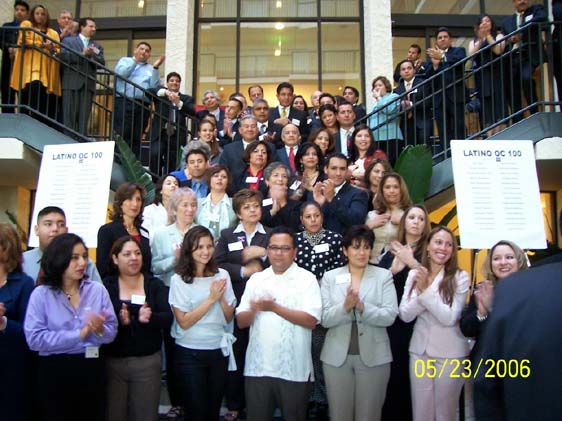
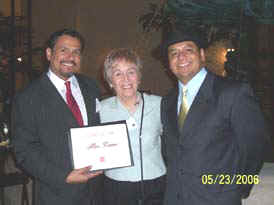
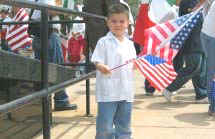 The march on May 1st brought so many cherished & sad memories of my childhood experiences as I marched with my family in the UFW Marches in the San Joaquin Valley chanting "Se Si
Puede".
The march on May 1st brought so many cherished & sad memories of my childhood experiences as I marched with my family in the UFW Marches in the San Joaquin Valley chanting "Se Si
Puede". 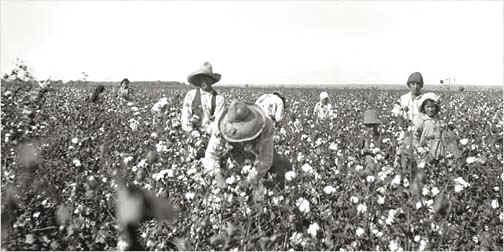
 At
Santa Ana College,
At
Santa Ana College, 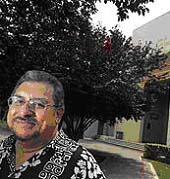
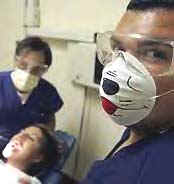
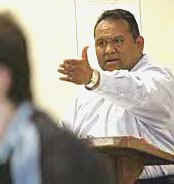
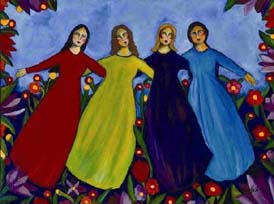
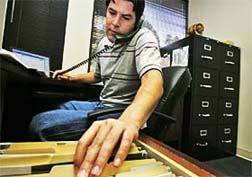
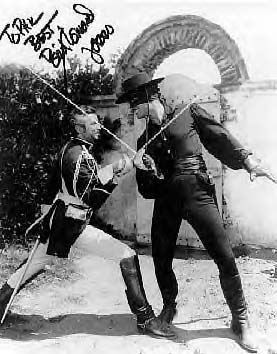
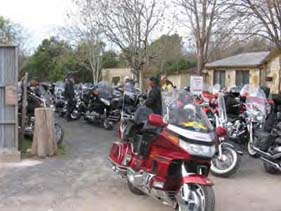
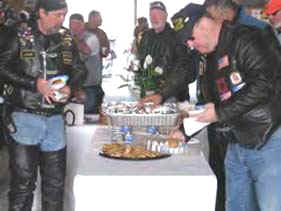
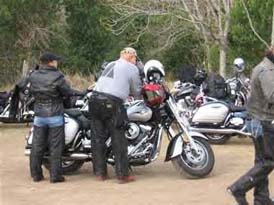
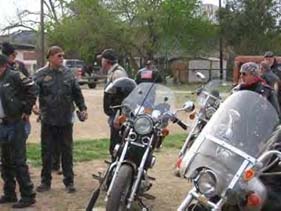
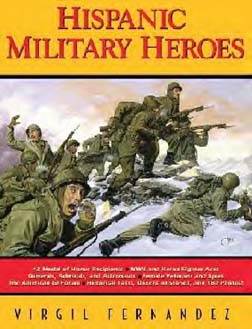
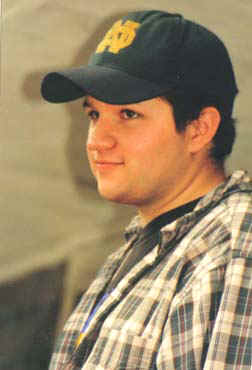 was in college, he was more
accepting of the fact that his dad was leaving everything to pursue such
untraditional goals. I felt good that I had my son’s support. My daughter,
Leigh, was indifferent to the whole affair. She was reluctant to show any
support, and at times, she seemed to be annoyed by anything that detracted
from her own life. I felt like the hassle of just getting together with her
to say goodbye was too much for her. We finally did get together. My
daughter had always made me proud, especially when she decided to study
Spanish at Boston University, eventually studying in Spain. She seemed to
have an interest in her culture that I did not see in my son. Since I was
embarking on a journey to discover my Mexican roots I thought she would show
more interest. Ever since my daughter went to college, she has seemed to be
drifting away from the family. My wife and I found her distance frustrating.
was in college, he was more
accepting of the fact that his dad was leaving everything to pursue such
untraditional goals. I felt good that I had my son’s support. My daughter,
Leigh, was indifferent to the whole affair. She was reluctant to show any
support, and at times, she seemed to be annoyed by anything that detracted
from her own life. I felt like the hassle of just getting together with her
to say goodbye was too much for her. We finally did get together. My
daughter had always made me proud, especially when she decided to study
Spanish at Boston University, eventually studying in Spain. She seemed to
have an interest in her culture that I did not see in my son. Since I was
embarking on a journey to discover my Mexican roots I thought she would show
more interest. Ever since my daughter went to college, she has seemed to be
drifting away from the family. My wife and I found her distance frustrating.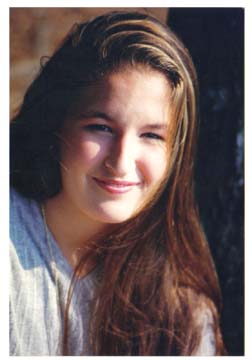 difficult to explain my trip to others. My hope is that someday
that all my family will understand why I had to take this journey and come
to appreciate the good things that resulted from my explorations. My close
friends Orlando and Linda Corona are very liberal thinking individuals. They
hate George Bush and are involved in the peace movement. Orlando was a
"Moonie" when he was young. Linda was the type that would go to
nude beaches when she was young. We have found both of these grown-up flower
children to be fun and entertaining and we relate to them in many ways.
Orlando is part Mexican and his father still lives in Mexico. Orlando and
Linda were supportive of my journey, but I think that Linda was hoping that
Orlando would not be tempted to join me because of his home commitments.
They have two sons who are still in school. I knew that Orlando wished that
he could do what I was attempting to do. I had wished that Orlando could be
the William Clark to my Meriwether Lewis. It was better for me that my
children were grown up. I would have hated to leave my wife with the
responsibility of having to take care of the family by herself. Even though
some occupations, such as being a soldier, require people to leave loved
ones. Orlando and Linda focused mostly on the self-discovery aspect of my
journey. I didn’t at all feel that this was the major reason. It was one
of several reasons that were all of equal importance.
difficult to explain my trip to others. My hope is that someday
that all my family will understand why I had to take this journey and come
to appreciate the good things that resulted from my explorations. My close
friends Orlando and Linda Corona are very liberal thinking individuals. They
hate George Bush and are involved in the peace movement. Orlando was a
"Moonie" when he was young. Linda was the type that would go to
nude beaches when she was young. We have found both of these grown-up flower
children to be fun and entertaining and we relate to them in many ways.
Orlando is part Mexican and his father still lives in Mexico. Orlando and
Linda were supportive of my journey, but I think that Linda was hoping that
Orlando would not be tempted to join me because of his home commitments.
They have two sons who are still in school. I knew that Orlando wished that
he could do what I was attempting to do. I had wished that Orlando could be
the William Clark to my Meriwether Lewis. It was better for me that my
children were grown up. I would have hated to leave my wife with the
responsibility of having to take care of the family by herself. Even though
some occupations, such as being a soldier, require people to leave loved
ones. Orlando and Linda focused mostly on the self-discovery aspect of my
journey. I didn’t at all feel that this was the major reason. It was one
of several reasons that were all of equal importance. 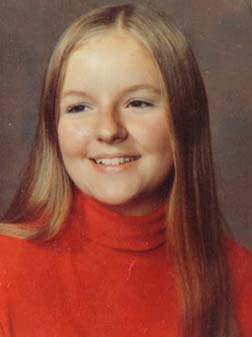 long journey and putting together my
food supplies. Kathy and I stopped at the local supermarket to pick up
groceries and ice. Kathy and I followed each other in our separate vehicles
for about 20 miles. We then pulled over on the side of the road, said our
final goodbyes and gave each other a kiss. Dudley and I were on our own. I
drove about an hour and then detoured to Orlando’s and Linda’s house to
say a final good bye to them. They invited me in for some breakfast. It made
me feel good that we could spend these last few minutes together. I then
settled into my keel boat with wheels and headed towards Connecticut. Once
the adrenalin wore off, I got very tired so I was only able to go 25 miles
before I had to pull over at the first rest park to take a nap. It was not a
good start but I had to get used to life on the road. I would need to drive
much further between stops if I ever
was going to travel the first 2,500
miles of my journey.
long journey and putting together my
food supplies. Kathy and I stopped at the local supermarket to pick up
groceries and ice. Kathy and I followed each other in our separate vehicles
for about 20 miles. We then pulled over on the side of the road, said our
final goodbyes and gave each other a kiss. Dudley and I were on our own. I
drove about an hour and then detoured to Orlando’s and Linda’s house to
say a final good bye to them. They invited me in for some breakfast. It made
me feel good that we could spend these last few minutes together. I then
settled into my keel boat with wheels and headed towards Connecticut. Once
the adrenalin wore off, I got very tired so I was only able to go 25 miles
before I had to pull over at the first rest park to take a nap. It was not a
good start but I had to get used to life on the road. I would need to drive
much further between stops if I ever
was going to travel the first 2,500
miles of my journey. name, such as Plazaola, Plazolo, but
the variation that has been a constant throughout the centuries has been
Plazola or Plasola.
name, such as Plazaola, Plazolo, but
the variation that has been a constant throughout the centuries has been
Plazola or Plasola.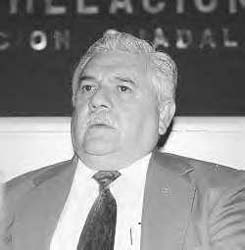 Among them is Lic. Héctor Pérez Plazola.
Mr. Pérez Plazola is considered a living legend of the PAN political
party. His family was one of the five families that founded the political
party in 1939. He also ran for governor of the state of Jalisco in 1988,
was the mayor of Guadalajara, Jalisco in the year 2000, was the Secretary
of State from 2003 to 2005 and is currently running for senator. Other
members of the family became mayors of El Grullo, Jalisco during the
1920’s and 1930’s.
Among them is Lic. Héctor Pérez Plazola.
Mr. Pérez Plazola is considered a living legend of the PAN political
party. His family was one of the five families that founded the political
party in 1939. He also ran for governor of the state of Jalisco in 1988,
was the mayor of Guadalajara, Jalisco in the year 2000, was the Secretary
of State from 2003 to 2005 and is currently running for senator. Other
members of the family became mayors of El Grullo, Jalisco during the
1920’s and 1930’s.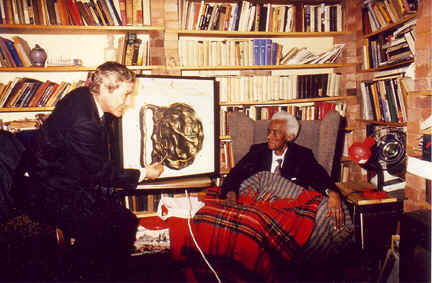
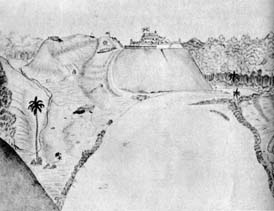
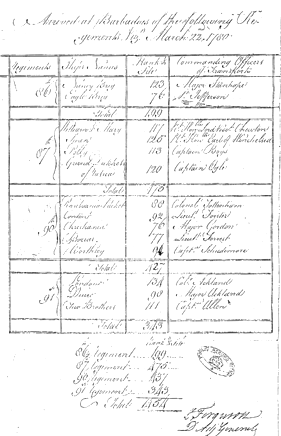
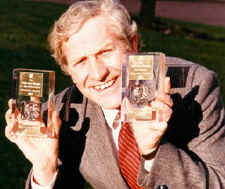
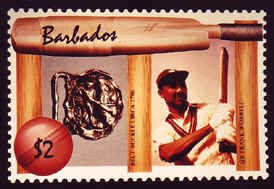
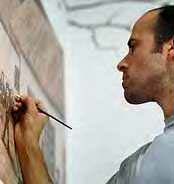 Anaheim Hills' first museum opens in adobe,
by Diane Reed, The Orange County Register, Monday, May 1, 2006
Anaheim Hills' first museum opens in adobe,
by Diane Reed, The Orange County Register, Monday, May 1, 2006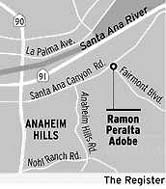
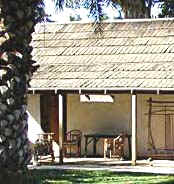
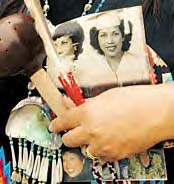

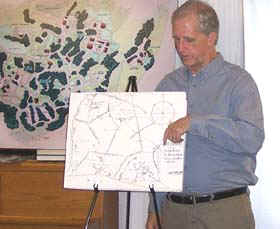 Well known historian, dedicated to giving visibility to the diverse
cultural heritage in California, he spoke of the Nieto Ranch, which
included most of Orange County and the land divisions of California, from
the original 40 Spanish grants to some 800 Mexican land grants. His
passionate delivery both entertained and enlightened. Doug's
publishing company specializes in special interest topics of historical
significance. Here are the front covers of just a few of the books that
can be found on his website. Doug is a long time friend of SHHAR,
having designed our logo as a gift, many years ago.. It is a
pleasure to see Doug's love becomes his profession.
Well known historian, dedicated to giving visibility to the diverse
cultural heritage in California, he spoke of the Nieto Ranch, which
included most of Orange County and the land divisions of California, from
the original 40 Spanish grants to some 800 Mexican land grants. His
passionate delivery both entertained and enlightened. Doug's
publishing company specializes in special interest topics of historical
significance. Here are the front covers of just a few of the books that
can be found on his website. Doug is a long time friend of SHHAR,
having designed our logo as a gift, many years ago.. It is a
pleasure to see Doug's love becomes his profession.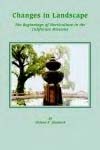
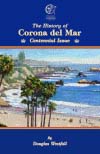

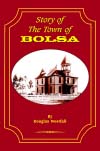

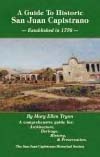
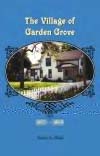
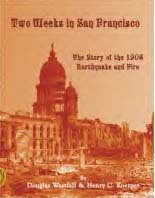
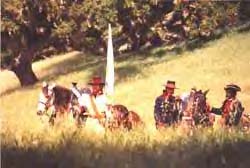
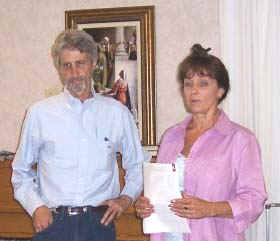



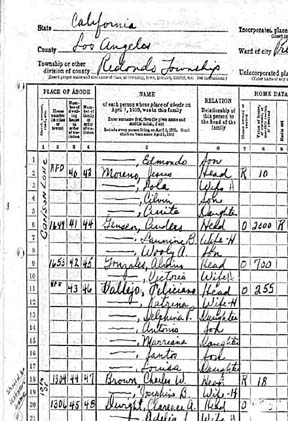
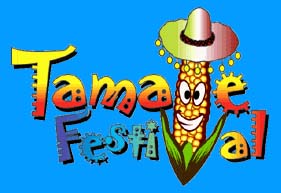
 "Just
opposite to the great fall is Sentinel Rock, a narrow promontory jutting out
a quarter of a mile into the valley, and at the point of the mountain is an
obelisk, about 2000 feet high, and three hundred feet thick, the summit
reaching an elevation of 3000 feet. The sides show beautiful vertical
cleavages in the granite."
"Just
opposite to the great fall is Sentinel Rock, a narrow promontory jutting out
a quarter of a mile into the valley, and at the point of the mountain is an
obelisk, about 2000 feet high, and three hundred feet thick, the summit
reaching an elevation of 3000 feet. The sides show beautiful vertical
cleavages in the granite."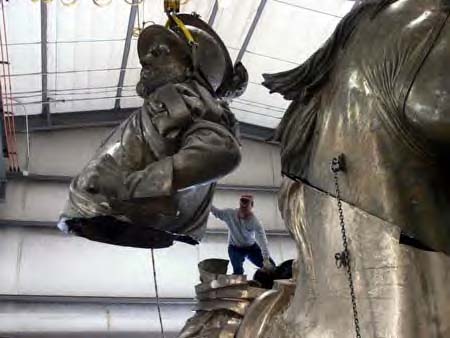
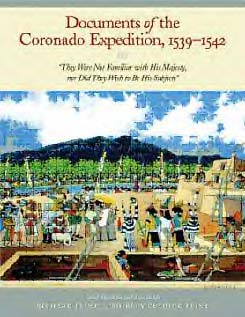

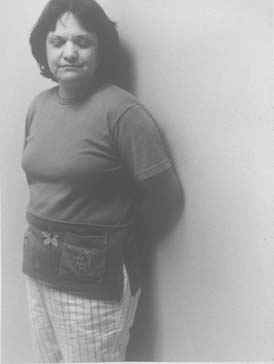
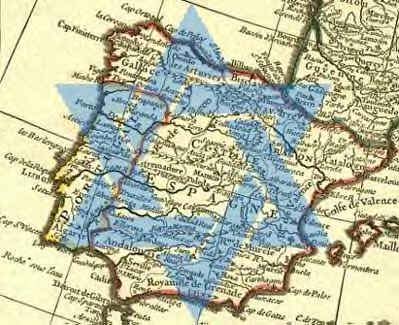
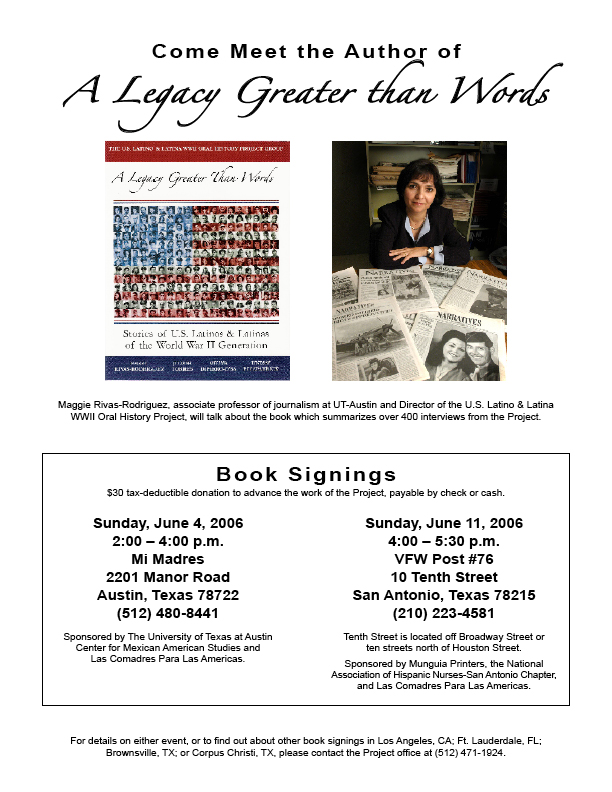
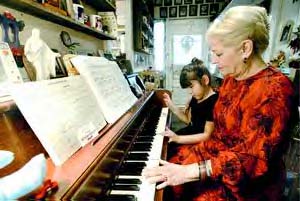
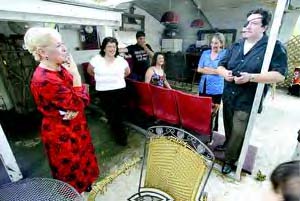



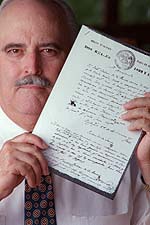
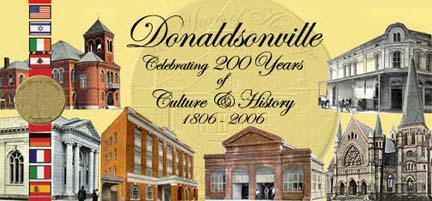
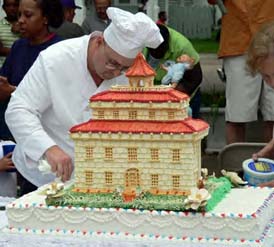
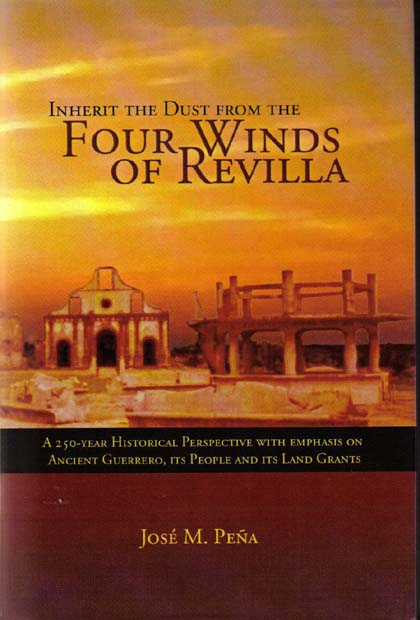
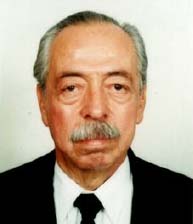
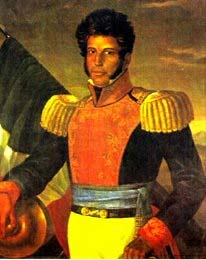
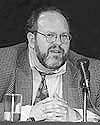 m proud to be a descendant of Vicente Guerrero. Is that enough?..." Raymundo recently left his third paper to take on the task of resurrecting the century and a half old EL UNIVERSAL, serving as editorial section chief. Raymundo had articles
regularly in the Los Angeles LA OPINION during the 1990s. An editor there who has helped me get articles in LA OPINION explained when I asked why Raymundo seemed to no longer write for the paper, "He got mad." On the other hand, Antonio Riva Palacio Lopez has been, to me, a warm and laid back fellow.
Ted
m proud to be a descendant of Vicente Guerrero. Is that enough?..." Raymundo recently left his third paper to take on the task of resurrecting the century and a half old EL UNIVERSAL, serving as editorial section chief. Raymundo had articles
regularly in the Los Angeles LA OPINION during the 1990s. An editor there who has helped me get articles in LA OPINION explained when I asked why Raymundo seemed to no longer write for the paper, "He got mad." On the other hand, Antonio Riva Palacio Lopez has been, to me, a warm and laid back fellow.
Ted
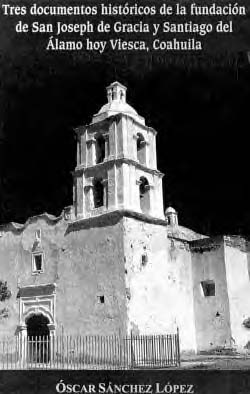
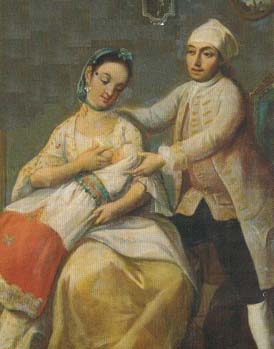
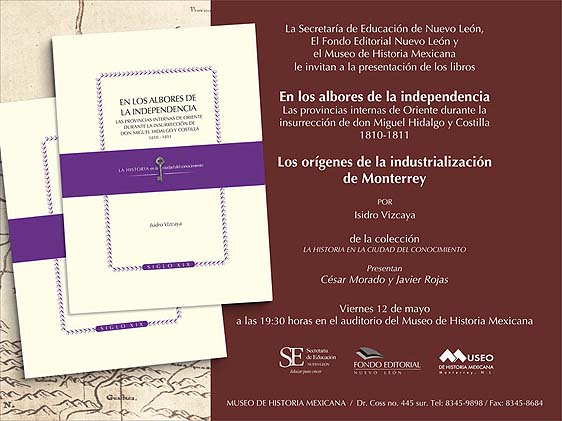
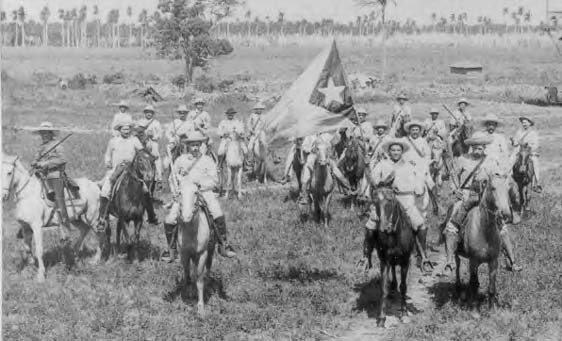
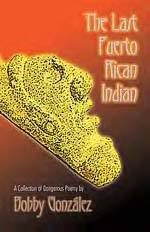
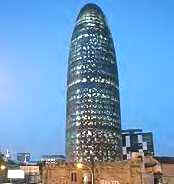
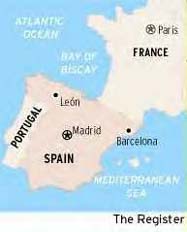

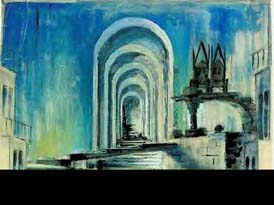
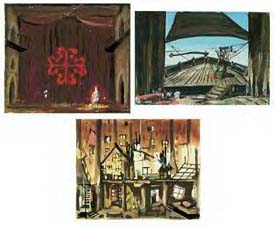
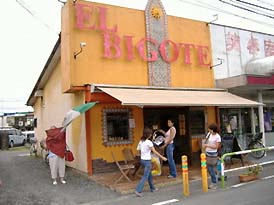
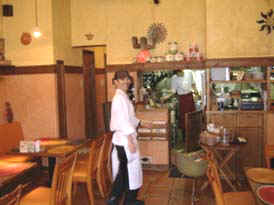
 Displaying
a collection of family photographs on your walls honors your heritage
while adding warmth to your home.
Displaying
a collection of family photographs on your walls honors your heritage
while adding warmth to your home. Amazon Stonehenge' found in Brazil
Amazon Stonehenge' found in Brazil 